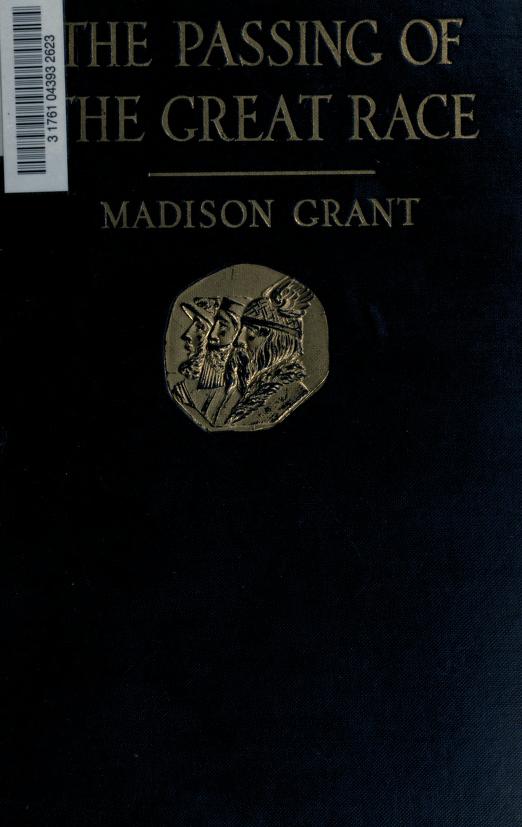
References and Quotes
In 1916, the year of Madison Grant’s Passing of the Great Race, Kellor published Straight America. In it she called for universal military service, industrial mobilization, a continuing military build-up, precisely engineered school curricula, and total Americanization, an urgent package to revitalize nationalism. America was not yet at war.
Grant was deeply disgusted by the mixing of European races underway here; he believed the foundation of our national and cultural life lay in racial purity and backed this opinion with action. It is hardly possible to believe some of this attitude didn’t enter into the museum’s presentation of data and even into those hundreds of thousands of school field trips. In Grant’s competent hands, the boldness and sweep of old Anglo-Saxon tradition was fused into a systematic worldview, then broadcast through books and lectures to the entire planet. His magnum opus appeared in 1916 bearing the epic title The Passing of the Great Race, with an introduction by Museum of Natural History luminary Henry Fairfield Osborn—a man who wrote one of the texts I used myself as a junior high school student.
The Passing of the Great Race warns that the ruling race of the Western world is beginning to wane because of a "fatuous belief" that environment can alter heredity.2 The clear connection to the predestination canon of Calvin and to the great Norse tradition of implacable Fate is unmistakable. Grant’s own genealogy came from both these strains in European history. Whatever else he was, Grant was neither dull nor commonplace. Using Darwin and Mendelian genetics to support his argument, Grant said flatly that different races do not blend, that mixing "gives us a race reverting tothe more ancient, generalized and lower type."[p.56] A "cross between any of the three European races and a Jew is a Jew."[p.56]
Madison Grant felt democracy as a political system violated scientific facts of heredity the same way Christianity did, by favoring the weak. This led inexorably to biological decadence. Even national consciousness might confuse one’s rational first loyalty, which had to be race. This was the codex of the Bronx Zoo’s founder. Six years after its publication, The Passing of the Great Race was still in print and Grant’s New York Zoological Society more respectable than ever. Eventually Margaret Mead was beneficiary of considerable patronage from Grant’s Museum of Natural History, as indeed the whole shaky new community of anthropological thought became. Although Mead’s work appears to contradict Grant’s, by the time the academic world began to push the relativism of Mead, Ruth Benedict, and other interpreters of primitive culture, a double standard had settled in on intellectual life in the United States and Europe.